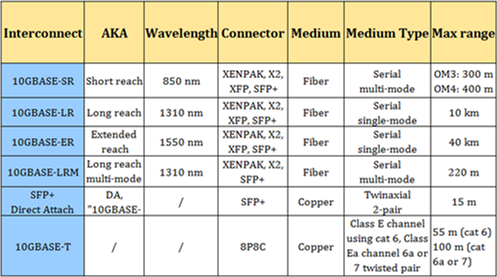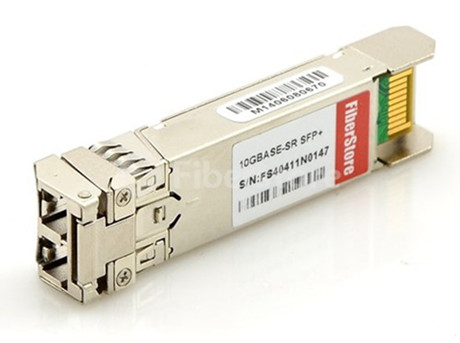Network installers usually come across a situation that device you have in your network does not always fit and work perfectly with the fiber. They plan to make a cable plant based on the multimode cabling, but owing to the link limitation or other reasons, they have to connect multimode equipment with single-mode devices. Is it feasible? Or put it more specifically, can I use the multimode SFP over single-mode fibers or vice versa? This article will give you a detailed illustration about the feasibility of the solutions, and introduce two relevant devices (mode conditioning cable and multimode to single-mode fiber media converter).
Single-mode Fiber Over Multimode SFP—You Can If You Are Lucky
This is the question that has been asked so many time, but no one can give the exact answer—yes or no. Hence, let’s illustrate it in details.
Most people think single-mode and multimode fibers are not interchangable because of the wave length of the laser and core size of the fiber. Single-mode fiber (MMF) uses a laser as a light source (the light beam is very concentrated), while multimode fiber (MMF) uses an LED to generate the signal. This would require two significantly different devices to generate the signal.
The core sizes are drastically different between SMF and MMF. SMF is 9 micron and multimode is 62.5 or 50 micron. If users try to mix the single-mode and multimode cabling in the same network, they might have trouble dealing with the two different types of signal.
However, it is possible to interconnect two devices using SMF interfaces at one end and MMF receiver at the other end. Keep in mind that it depends on the devices, so you can if you are lucky. When plugging LC single-mode duplex fibers on the multimode fiber transceiver (1000GBASE-SX) in the network, you will find the link came up (the light on the switch turns green). Therefore, the multimode fiber transceiver connected by the single-mode fibers works for short-reach application. The following image is the real screenshot of the single-mode fibers inserting into the 1000BASE-SX SFP.

While it should be stressed that the link is not reliable and it only works for particular brand devices with a very short link length. Many sophisticated vendors like Huawei, Alcatel or Cisco do not support it. Nevertheless, owing to the differential mode delay (DMD) effect, signal loss of this connection is not acceptable, either.
To sum up, this might be feasible but not advisable. If you need to make a connection between single-mode and multimode interfaces, you’d better use the intermediate switch that is able to convert the signals between single-mode and multimode fibers. The following part will introduce two solutions that might be helpful for the multimode and single-mode conversion.
Solution 1: MCP Cable—Single-mode In and Multimode Out
As to the multimode fiber with single-mode SFPs, most people mention the mode conditioning patch (MCP) cables. The MCP cable is launched to support 1000BASE-LX optics over multimode cable plant. The mode conditioning cables allow customers to successfully run Gigabit Ethernet over our multimode cable using single-mode fiber transceivers, Cisco 1000BASE-LX/LH SFP is the special type of transceiver that can both support single-mode and multimode fibers. The image below displays the difference between standard SC multimode patch cable and SC mode conditioning patch cable.

Then, in this situation, you can run successfully from a single-mode fiber transceiver over multimode fiber with the use of MCP cables, but the distance will not exceed the link specification for multimode transceivers. Otherwise, there will be much signal loss in the cable run.
In general, if you want to run multimode fiber optic cable over 1000BASE-LX SFPs, you can use the mode conditioning cable. However, mode conditioning patch cords are required for link distances greater than 984 feet (300 meters). For distance less than 300 m, please omit the mode conditioning patch cords (although there is no problem using it on short links).
Solution 2: Fiber to Fiber Media Converter—Conversion Between Multimode and Single-mode Fibers
As noted before, mode conditioning cables, to some extent, can realize the connection between single-mode to multimode, but you can not say that you can convert single-mode to multimode or vice versa. Mode conversion between multimode and single-mode fibers often requires fiber to fiber media converters or the single-mode to multimode fiber converter.

In the above diagram, two Ethernet switches equipped with multimode fiber ports are connected utilizing a pair of fiber-to-fiber converters which convert the multimode fiber to single-mode and enable network connectivity across the distance between Gigabit switches.
Conclusion
It doesn't really make much sense to use the single-mode fiber transceivers with multimode fibers in your network or vice versa, although the link will come up. Like I said above, you can if you are lucky connect. MCP cables and fiber to fiber converter are the two available options for single-mode and multimode connection. If you bought the wrong fiber optic cables, just replace it into the right one. Fiber optic cables and optical transceivers modules nowadays are very cheap. You won’t need to risk of mixing them in the same network.
Original Source : Single-mode Fiber Work Over Multimode SFP Transceiver
















